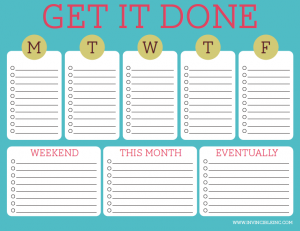“Let’s be honest now and admit it – we all feel lazy sometimes when we have to write a blog …” (from professional blogger Tom Jager)
This will only be my fourth blog post of the 2016 school year; I haven’t just been lazy but more so comatose. “Write a blog post” was added to my To Do List back in June, so you can see why I am regularly checking for a pulse. That’s something I haven’t done since my son was a teenager. It’s certainly not that I have nothing to say, I always have a lot to say. So, what has been the problem?

This printable To Do List (https://invincibleinc.wordpress.com/2011/11/30/printable_todo_list/) is clearly missing a NEVER column.
I think I finally have an answer. The mere fact that so many schools have an eLearning Manager (I only use this because “Full Time Multi-Tasking Tech Ninja” is not an actual job title. Note to self, must get that on a T-Shirt) is an admission of failure. If the much hyped Digital Education Revolution had succeeded, I should be back teaching History full time. More on that later. The reality is that I’ve become an actual “Jack of all (Tech) Trades” and consequently master of none. I frequently research tools for colleagues, trial them, pass on the key information and … repeat! I regularly visit classrooms to troubleshoot tech problems. My role has led to me having a little bit of knowledge about 100s of tools but few that I have mastered.
Given the necessary authority (… All Hail Imperator Simonus,) I would be insistent upon all teachers having the same digital toolbox. This would comprise six or eight tools that every teacher masters and uses in their classroom. We are forever reading about standardised tests and general capabilities for students. Surely this standardisation should also extend to the digital capabilities of teachers. But I already know the type of objections I would hear, “I’m a Maths teacher, why do I need to know how to screencast?” I know because I actually received this comment.
This term I have returned to teaching an Ancient Studies class and I’m far from comatose there; it looks more like caffeine fuelled hyperactivity. I suspect it is in part about using technology to increase the engagement of students with whom I’ve built a personal relationship. My first moves into technology came out of a passion to improve my teaching … if only you could teach passion to others! Still, like all good emperors, I will continue to build my empire, protect the citizens and repel the barbarians at the gate. But, for now, I’m off to cross this post of my list. Another post soon … maybe!

I know it’s Vespasian … But I can see the resemblance.
